R. Colin Tait
A case like this, here, where you show who gets paid behind all the tragedy and the fraud, where you show how the money routes itself, how we’re all, all of us, vested, all of us complicit? Baby, I could die happy.
– Freamon, The Wire
Tony Soprano: Sil, break it down for ‘em. What two businesses have traditionally been recession-proof since time immemorial?
Silvio Dante: Certain aspects of show business and our thing.
– The Sopranos
Starting tomorrow morning I am personally offering a fifty dollar bounty for every decapitated head of as many of these godless heathen cocksuckers as anyone can bring in – tomorrow – with no upper limit. That’s all I say on that subject…except the next round is on the house. God rest the souls of that poor family…and pussy’s half price for the next fifteen minutes.
– Al Swearingen, Deadwood
Starting in 1999, television genres – and as a result, film genres – underwent a radical transformation primarily at the hands of the HBO (Home Box Office) pay television network. With the release of the groundbreaking series The Sopranos, Deadwood, and The Wire, the network is singlehandedly responsible for shifting the narrative, syntactical and iconographic features of genre while at the same time riding a wave of unparalleled critical and commercial success. As we reach the end of the road of what seems to be the golden era of HBO, following Deadwood’s sudden ending after its successful third season in 2006, David Chase’s jarring blackout of The Sopranos in 2007, and The Wire’s fifth and final season in 2008, now is a particularly fortuitous time to analyze the overall influence of HBO’s output over the past decade, not only by examining how it has shaped film genres, but how these series have transformed audience expectations, and, importantly, cultural responses to television genres as well.
1. Questions of Genre, Questions of HBO
At present, there is no systematized account of scholarship on HBO production yet available. While there has been a great deal of interest in individual HBO series, there is still no unified approach to the network as a whole, let alone the revision of genre it enacts. Studies like David Lavery’s edited collections This Thing of Ours: Investigating The Sopranos, Reading The Sopranos: Hit TV from HBO, and Deadwood: A Western to Swear By, represent the higher end of the scholarship surrounding these subjects, and should be seen as timely attempts to legitimate these series as serious objects of study. Other sources, such as Maurice Yacowar’s The Sopranos on the Couch, and Regina Barreca’s A Sitdown With The Sopranos: Watching Italian American Culture on TV’s Most Talked-About Series, serve mostly to provide synopses of episodes for fans, thus offering little in terms of critical cultural commentary. In all cases the scholarship that does exist often takes the individual series on a case-by-case basis, largely eschewing an expansive approach to the relationships between them.
From the film studies side, scholarly accounts of contemporary genre generally understand the need to incorporate the specific challenges that the HBO series raise, but have largely struggled to include the network into the latest elaborations of genre theory.1 These studies tend to incorporate partial solutions to the twin problems of film and television genres. When HBO is addressed from the film studies approach, it tends to be positioned from the cinematic perspective of genre revision, rather than considering television’s overall influence on this revisionist tendency. Thus, both approaches are insufficiently positioned to adequately tackle the unique set of questions that are raised by shows such as The Sopranos, Deadwood and The Wire. As a remedy to this problem I would like to suggest the following procedure. First, we must locate the influence of film genres – such as the Gangster film, the Western, and the Crime drama – on these respective series. Second, we should ask how the narrative serialization has transformed audience expectations for narrative forms, which speaks to the larger issue of ‘sequelization’ in Hollywood. Finally, we should ask what the ramifications of HBO’s treatment of generic ‘realism’ may have on the continuing study of film and television genres.
Deadwood has certainly piqued interest in revisiting the Western, a genre that has been declared dead many more times than any other. More importantly, the latest Western film resurgence, as seen in diverse works ranging from The Proposition (John Hillcoat, 2005), A History of Violence (David Cronenberg, 2005), No Country For Old Men (Joel and Ethan Coen, 2007), 3:10 to Yuma (James Mangold, 2007), The Assassination of Jesse James by the Coward Robert Ford (Andrew Dominik, 2007), and There Will Be Blood (P.T. Anderson, 2007) feature a particular view of the West which diverges significantly from classic, and even revisionist, cinematic versions. The foul language and increased scope of violence, in addition to the subversion of earlier binaries of good and evil are the most obvious changes that take place, in addition to the easing of moral codes that the Western heroes most often possess. In each of these cases, the newer emphasis on graphic sex and violent tropes, not to mention the blurring of lines between the traditional binaries of wilderness and civilization, have been influenced by Deadwood as much as any other traditional, cinematic source. The same can be said for The Sopranos and The Wire, where an infusion of HBO’s house style of realistic verisimilitude has profoundly affected our contemporary view of genre. In effect, HBO has made a solid business of reviving and revising genre, while others have followed suit not only by emulating these changes, but by profiting from them as well.
2. Industrial Considerations: Genre as a “Recession-Proof” Business
I propose that HBO is a veritable genre factory. In this sense, the network is something akin to a classical Hollywood studio, whose implementation and radical transformation of genres functions as a well-known commodity and brand identity. Just as the golden-age Hollywood ‘dream factories’ sought to differentiate their manufacturing an intangible product such as film by way of their association with specific stars (Belton 66-70), more often they differentiated themselves by exploiting specific genres. This phenomenon can be seen with Warner Brothers’ association with the gangster film in the 1930s, MGM’s trademark musicals and comedies through the 1940s, and Universal Pictures’ famous Horror films of the 1950s, to name but a few examples. Similarly, much of HBO’s commercial and critical success is based on its unique exploitation of generic tropes. Viewing the industrial practices of HBO as a genre factory similar to that of a Classical Hollywood studio allows us to link these genre transformations from the vantage point of film and television criticism, leading us to significant conclusions regarding what these historical and industrial changes may mean in the present tense.
Speaking about the economics of the studio era, Thomas Schatz recounts that “genre films comprised the vast majority of the most popular and profitable productions, and this trend continued until after its death” (Schatz 6-7). Genre in the studio era was directly responsible for the process of streamlining narrative; the success of the studios was based on their ability to repeat their financially-proven recipes. Tellingly, this prosperity was borne on the shoulders of genre filmmaking, where generic films (the screwball comedy, the gangster film, the Western, etc.) fed audience expectations and audience demands. This relationship to mass audiences was always reciprocal, and studios attempted to give viewers more of the popular standard tropes and accounted for the standardization of the genre system (5). Schatz’s view is similar to Rick Altman’s “Producer’s Game.” Here, genres are built on the winning formulas of other successful genres. Producers, then, are directly responsible for the repetition of this content, which ultimately explains how genres are formed, how they evolve, why they die out, and under what circumstances another cycle resurges.
Altman’s account of genre evolution relies on two basic concepts, “The Critic’s Game” and “The Producer’s Game.” In the critic’s game, a genre is formed ex post facto, where a critic or scholar will approach a series of films in order to put them together in a manner which suits their agenda. This exercise is often counterproductive, as it rarely takes into account the historical and industrial factors that lead into a genre’s constitution. The producer’s game, on the other hand, provides the means to measure the genre’s historical appearances and disappearances within specific coordinates. In theory, producers use the following formula:
From box-office information, identify a successful film.
- Analyze the film in order to discover what made it successful.
- Make another film stressing the assumed formula for success.
- Check box-office information on the new film and reassess the success formula accordingly.
- Use the revised formula as the basis for another film.
- Continue the process indefinitely. (Altman 38)
Thus, genres are constantly in the process of mutating in order to maximize their box-office potential and satisfy audience demand. This factor ultimately accounts for the genre’s cyclical appearances and disappearances within different eras and when audience demand wanes, the genre disappears altogether. This theory provides a rationale which explains the recurrent iconography, syntax and narrative concerns of a genre by positing that producers merely attempt to “reconfigure previous films” and “thus define genres in a manner which suits their institutional needs” (48).
Generic standardization and tinkering akin to the producer’s game is precisely what occurs to HBO’s output in the last decade, but on a larger, trans-generic stage. What occurs to the genre film in HBO’s hands is not limited to a single instance – as in the case of The Sopranos and the gangster genre – but to all of the respective genres. In what we might consider the ‘trans-generic producer’s game,’ the network’s post-Sopranos output provides us with the following picture: following the immense success of The Sopranos, the network continues to cement its industrial practices specifically in film genres. From here, we can see Sex in the City as firmly grounded in the ‘Women’s Film,’ or melodrama; Band of Brothers in the World War II Combat Film; Carnivale in ‘The Fantastic’ or Horror Genre; Rome in the Epic; Deadwood in the Western; K-Street in the Conspiracy Film; Entourage in the Backstage Musical; and The Wire in the Police Procedural. Three conclusions can be reached from this brief overview. First, it is clear that genre is the key factor to HBO’s success. Second, each series, taken in relation to each other, constitute a much larger genre system. Consequently, the individual series can all be defined in opposition to their cinematic counterparts to the degree that they transform the genre by way of their explicit treatment of syntax, narrative and iconography. Ultimately, HBO’s various generic mutations involve a longer form (and serialized) narrative, an explicit and expanded syntax and the transmutation of locale to an unprecedented degree in previous genre cycles.
A character’s narrative arc within a specific genre is the single largest transformative factor in HBO’s generic practice, profoundly affecting the way that the protagonist’s story is ultimately told. Examples lie in the first-person account of either Carrie Bradshaw’s (Sarah Jessica Parker) weekly column in Sex in the City or Tony Soprano’s (James Gandolfini) weekly therapy sessions in The Sopranos, both of which become syntactical fixtures within the respective series. The expansive treatment of Tony’s psyche, presented by way of our intrusion into Dr. Melfi’s (Lorraine Bracco) psychiatric practice and through the audience’s direct access to dream sequences throughout the series results in a radical transformation of the gangster film’s syntactical traits to the point where the viewer is subjectively tied to Tony in a manner that far exceeds any other character in the history of film. This counters the distanciation of the gangster-hero which occurred in the 1930s under the Hays code, where the gangster’s monstrously tragic dimension served to render him unrelatable and ultimately unlikable to audiences. Even the intimate portrait of the Corleones across three Godfather (Francis Ford Coppola 1972-1990) films does not begin to compare to the more than eighty hours we spend with the Sopranos.
The same can be said of Deadwood’s treatment of Western iconography. Here, it is impossible to tell the difference between good and evil based simply on the basis of costume, which is the most obvious of all classical generic tropes. Rather, everyone in the camp is equally dirty, equally squalid and equally dubious in their morality. The presence of other races is also another shift in the Western iconography, as characters largely excluded from earlier versions of the genre (and, significantly, American history) play prominent roles within the narrative. This results not only in fully-rendered characterizations of immigrants, including Wu (Keone Young) “the Chinaman” and Blazanov (Pavel Lychnikoff), the Russian wire operator, but to races and genders that rarely saw fair representation within the genre. Obviously this includes black livery owner Hostetler (Richard Gant), the “General” (Franklyn Ajaye), but also Sol Star (John Hawkes), the town’s only Jewish resident and eventual mayor.
Instead of employing the classic Western women’s roles, ‘the school marm’ and the ‘hooker with the heart of gold,’ the series significantly spreads this narrative agency from one or two character types to several other options. The show’s depiction of General Custer’s scout Calamity Jane (Robin Weigert) is one such example, as Jane is easily the most foul-mouthed character in the series, cutting through the Western’s conventions by singlehandedly subverting and revising the character types available to women. The widow Alma Garrett (Molly Parker) expands these windows further, and though she starts in the traditional position of the ‘Eastern Woman,’ she eventually problematizes the issue of female representation in a positive manner by becoming the town’s richest citizen. There are many other examples of change in this regard, including Trixie (Paula Malcomson), Joanie Stubbs (Kim Dickens) and Martha Bullock (Anna Gunn), whose characters have their own autonomy and do not merely serve as romantic foils for the Western heroes but have their own agendas, personalities and fully-formed plots.2 The same is true of other HBO series, where viewers can actively attach themselves to drug dealers, gangsters and crooked cops via the expanded seriality of their narratives and the expanded representation of character types.
The Wire expands generic narrative practices to the point where the cop series is no longer about a single person and their narrative arc, but to several systems, and ultimately to a city itself which, in turn, stands in for America as a whole. Though The Wire begins with Jimmy McNulty’s (Dominic West) quest to solve one big case, the scope of the series’ ongoing investigation expands to include almost every facet of American urban reality. As each season places another layer on the series’ ongoing trajectory, the audience’s conception and expectation of a crime drama expands exponentially. Contrary to the traditional police procedural, which wraps up a single case within the confines of an hour-long episode, The Wire sets new standards for serial narratives as it essentially follows one single case throughout the span of its five-season arc. It moves from the micro-investigation of the infamous Baltimore drug crew, The Barksdale gang, to the macrocosm of the contemporary American city. Along the way, the series narrative expands concentrically to involve the institutions and elements which constitute and contribute to the problems of poverty, unemployment, drugs, corruption, and politics while at the same time expanding traditional conceptions of character and type.
Additionally, each season of the The Wire questions the state of contemporary America by concentrating specifically on its relative features. The first season deals with the inner-city, while the second questions the state of contemporary unions. Season three depicts the minutiae of running a police district with varying drug-policing strategies, while the fourth contrasts the electability of a white mayoral candidate in a primarily black city against the issue of youth and education in a cash-strapped system. Finally, the fifth season synthesizes all of these elements by incorporating media culpability in all of these issues, demonstrating how a sensationalistic, prize-driven, corporately-downsized press fails to properly cover its city’s key problems. The show’s setting in a major crimes unit begins and ends with the larger premise that crime is everywhere, business is business and that it takes five years of dogged determination to round up and attempt to prosecute all the criminals. The ultimate dramatic consequence of all this action results in the bad guys getting away in the end, and the cycle of crime and poverty continuing: a subversion of the Crime narrative’s heart to say the least. Though the investigation begins on the street, following a distinctive and storied money trail, the detectives gradually implicate members of city council, lawyers and the highest levels of government, including the show’s uber-villains, Senator Clay Davis (Isiah Whitlock Jr.) and criminal defense lawyer Maurice Levy (Michael Kostroff). This diffusion has profound ramifications for the consideration of generic narrative, as the expanded nature of the series irrevocably absorbs, yet transforms the genres of the political film, lawyer drama, the cop show, the gangsta film, the police procedural, the social problem film, and the newspaper film – incorporating any and all of these narratives into its larger fabric.
3. “Welcome to Fucking Deadwood”: Genre Censorship, Genre Evolution
New genre cycles are always accompanied with an easing of moral codes and the institutional guidelines which reflect them. Consequently, each cycle revives critical questions of film realism in relation to the cinematic codes which accompany these changes. With this in mind, censorship, or lack thereof, may be the most important factor relating to genre evolution in general and to the HBO-ification of genre in particular. Series creators working for HBO are allowed the creative freedom to present language, nudity and violence that far exceeds the MPAA (Motion Pictures Association of America) rating of NC-17. In the context of the current movie rating system in which an NC-17 rating is the kiss of death for the release of a Hollywood film, a theatrical version of The Sopranos, Deadwood, or The Wire is effectively impossible. Conversely, as Mark C. Rogers, Michael Epstein, and Jimmie L. Reeves suggest, the edgy content of much of HBO’s production – including full-frontal male nudity, excessive language, and graphic depictions of sex – is part of a larger corporate strategy that equates to ‘brand equity.’ This brand equity informs an audience’s consumption of its series, resulting not only in HBO delivering a reliable type of product, but to a receiver who is already predisposed to watch it.
The Sopranos and Deadwood subvert traditional film genre conventions, in which excessively violent content is excised from the ‘classical’ versions of the various genres. This can most clearly be seen in the increased emphasis of gritty hand-to-hand combat sequences over mere gun violence. While Hollywood genre films are certainly violent, it is a particular form of violence that an HBO viewer witnesses, as gun battles are often replaced with extensive beatings whose duration exceeds violence codes and whose explicitness defies convention. Ralphie Cifaretto’s (Joe Pantoliano) death at the hands of Tony Soprano, and subsequent decapitation, or Sheriff Seth Bullock’s (Timothy Olyphant) tendency to beat men within an inch of their lives are only two major examples of HBO’s unique treatment of violence, amply demonstrating how this ‘violent realism’ is crucial to its unique brand identity in the marketplace. Apparently, mere death is not good enough for HBO practitioners either, as dead bodies are subject to every form of indignity, including dismemberment, abandonment in empty tenements and even consumption by animals. The very first episode of The Sopranos features Christopher Moltasanti (Michael Imperioli) using a meat cleaver to hack up the body of the Polish gangster he has killed, and Deadwood includes extended sequences of Al Swearingen’s (Ian McShane) henchmen feeding their victim’s bodies to Wu’s pigs.
As Rogers, Epstein and Reeves propose, HBO’s key strategy to retaining (and expanding) viewership is to offer “edgy,” and “controversial programs,” since “HBO, as a premium cable service, was not subject to government and industry regulations on profanity, sexuality and violence” (51). This industrial strategy has profound ramifications for any consideration of film genre, having evolved in relation to censorship guidelines, coming first in the form of the Hays code, then later at the hands of the rating system of the MPAA. We should also recall that every phase of so-called ‘genre revisionism’ has always been accompanied by an easing of censorship restrictions. This is precisely what occurred in the New Hollywood Renaissance, where every genre was subject to broad redefinition in relation to the new ease with which filmmakers could depict film violence and nudity. Sam Peckinpah’s The Wild Bunch (1969) is continually held as the chief example of this tendency, but other pivotal films which embodied genre revisionism include Arthur Penn’s Bonnie and Clyde (1967), Robert Altman’s The Long Goodbye (1973) and McCabe and Mrs. Miller (1971), and Francis Ford Coppola’s The Godfather (1972) and The Godfather II (1974).
If we accept that genre has been largely shaped in relation to censorship issues and is integral to HBO’s brand equity, then we must consider HBO’s profound impact on the cyclical transformation of the Western and the tragic dimension of the gangster. Quite simply, the heyday of Hays classicism restricted narrative and visual content, resulting in a movie world which did not resemble reality per se but rather reflected the moral codes of the era. The ultimate effect of the Hays code, along with the studios’ strict adherence to it, may have served to inspire the ‘mythic’ approach to genre by filling in the censored details with ‘mythical’ accounts of history and reality. This particular approach has lain at the root of genre theory from the earliest analyses of the Western (Andre Bazin, Jim Kitses, Will Wright) to the gangster film (Johnathan Munby) and through to the present-day criticism. Following Roland Barthes’ dictum that the “very principle of myth” is that it “transforms history into nature” (Barthes 129), we can see how the critico-mythical approach to the Western results in an ideological view of the American settlement myth, and has larger, industrial ramifications as well. Barry Keith Grant describes Barthes’ wide-ranging influence on genre theory, explaining that: “From this perspective, genre movies tend to be read as ritualised endorsements of a dominant ideology.” The Western “is not really about a specific period in American history, but mantra of Manifest Destiny and the ‘winning’ of the west.” Importantly, it “offers a series of mythic endorsements of American individualism, colonialism and racism” (Grant 33). If, as it has been argued, the Western is the chief realisation of the American foundation myth, we can see that the various holes in these narratives and history are filled in by the mythic details, thus presenting an abstracted view of them via the well-rehearsed binaries of traditional genre theory. The mythic approach to genre ultimately results in a bastardised form of history, and by proxy, historical representation. Further, the binary codes that contribute to the mythic reading of the Western and gangster film were all, without exception, borne in relation to censorship codes.
Deadwood has no codes to adhere to, resulting in new possibilities for the Western genre, particularly when it comes to rendering a historical narrative. In series creator David Milch’s account, the studios’ strict adherence to censorship codes directly influenced these binary structures, so that what could not be shown left room for a genre’s interpretation as myth. Discussing the foul language of Deadwood (which is now famous for singlehandedly bringing ‘cocksucker’ back into the vernacular), Milch asserts: “I think that the reason that people took offense [to the language] had more to do with the conventions of the Western as it had developed from the thirties on rather than any realistic understanding of how people had spoken in the previous century” (Milch 2004a). Elsewhere, Milch explains that the Western’s narrative codes and iconographic fixtures evolved as much out of economic necessity as it did out of the need to reinforce mythical accounts of history:
Most moral codes are elevated expressions of economic necessities. So the first principle of the Hays code is obscenity in word thought or deed is an offense against natural law, and the word of God, and therefore will not be permitted in films. And that had to do with commerce, they didn’t want to piss anybody off. (Milch 2004b)
When put in relation to the conventional account of film genres, Milch’s reinsertion of a historical, rather than strictly generic, narrative of the formation of the West creates a paradoxical effect, particularly when considering his aim to bombard spectators with obscenity and violence.
Milch’s generic practice, when viewed in relation to the other works of the ‘HBO studio,’ represents a major shift in genre as a whole. The traditional view of myth (and genre) in Roland Barthes’ view performs the function of “naturalizing history.” Alternatively, Milch’s reinsertion of an unflinching, uncensored version of the past results in the opposite of Barthes’ dictum. As such, perhaps one of the most interesting ramifications of the HBO-ification of genre is the opposite effect: the factualization of myth and history.
4. Genre Systems: HBO and Genre Cycles
Dealing with the issue of genre revisionism ultimately means analyzing its constituent parts in relation to the issue of realism. While it is obvious enough that a film genre returns and disappears in cyclical patterns, critics have not yet agreed on what these patterns mean. Further, it is not clear whether we need to view each cycle independently of its entire historical trajectory – accounting for a genre’s life as a whole, as in the premise that an entire genre only has classical, settled and mannerist phases – or whether these generic outbursts may be considered inter-cyclically. In this sense, we can test my suggestion that HBO operates similarly to a classical Hollywood studio by measuring how its industrial practices not only operate inter-generically – thus representing profound shifts in narrative, syntax and iconography – but how this relates to earlier outbursts of like cycles, such as those that occurred in the early 1970s. This question necessitates us viewing the various genres as a system and understanding what this ultimately means for the issue of genre as a whole.
While the elaboration of individual genres in Hollywood Classicism has been largely settled in critical scholarship, the application of the classical model to HBO not only informs the related questions of genre revisionism, but also clarifies the function of cinematic realism. Rather than recount the standard reading of Classicism, as rendered by Bordwell, Thompson and Staiger (1985), I will take my cue from Fredric Jameson’s more theoretical approach to the issue. In Jameson’s view, the various genres in Hollywood Classicism must be viewed systematically, in order that they reveal and express their relation to a proper moment of cinematic ‘realism.’ The project of a film genre system implies that
…the reality socially constructed by Hollywood ‘realism’ is a map whose coordinates are parcelled out among the specific genres, to whose distinct registers are then assigned its various dimensions or specialized segments. The ‘world’ is then not what is represented in the romantic comedy or the film noir: but it is what is somehow governed by all of them together – the musical, the gangster cycles, ‘screwball comedy,’ melodrama, that ‘populist’ genre sometimes called social realism, the Western, romance, and the noir […] are governed also, something more difficult to think, by their generic relationships to each other (Jameson 175-76).
Jameson’s supposition includes the need to view genre systems as intimately related, rather than separate entities. This approach allows the critic to suggest that the genre system has always implied a particular relationship with a larger, more realistic map.
The restriction of censorship guidelines, when viewed in relation to the larger issue of genre cycles, affords the critic to view genre as inherently linked to a larger moment of cinematic realism. In other words, the genre systems of Hollywood Classicism, the 1970s Hollywood Renaissance, and their current HBO-ification provides the viewer with a larger cognitive map, allowing them greater insight into their own times. The cyclical reappearances and revision of these genres, as represented by the historical periods under which Hollywood Classicism, The Hollywood Renaissance, and the HBO-ification of genre emerged, are ultimately borne of specific sets of historical circumstances. Jameson’s assertion is that genre is a ‘realistic’ marker, and that the systematic resurgence of genre films serves the grander purpose of informing popular audiences with the new circumstances of their era.
Genre systems, whenever they take place, ‘reprogram’ audiences by depicting their contemporary realities (as in the case of The Wire and The Sopranos) or by infusing historical narratives with ideology which reflects their present eras (as in Deadwood). We might say that the larger project of generic realism and its inverse relationship to censorship provides the following insights:
We can therefore return at this point to the realism debate, and historicize it by the hypothesis that realism and its specific narrative forms construct their new world by programming their readers: by training them in their new habits and practices, which amount to whole new subject positions in a new kind of space; producing new kinds of action, but by way of the production of new categories of the event and of experience, of temporality and causality, which also preside over what will now be come to be thought of as reality (Jameson 166).
This assertion effectively sidesteps the mythic argument of earlier genre theory by expanding the formerly closed narratives, with a historically specific realism, which The Sopranos, Deadwood and The Wire all depict. Tony Soprano is the natural extension of this kind of work, as the gangster has largely evolved in relation to a community’s perception of a crime narrative. Soprano follows a trajectory of the gangster that has evolved from the early 1930s in an arc that Jameson characterizes as “a permutation of a generic convention” through which “one could write a history” of its “changing social and ideological functions” (Jameson 30). This method varies from a strictly reflectionist account, as it presents a cyclical explanation of genre, while at the same time, “suggest[ing] a global transformation of the potential logic of its narrative content without yet specifying the ideological function of the Mafia paradigm itself” (31). What Tony Soprano, Sheriff Bullock and Detective Jimmy McNulty all have in common is their ability to stand for a whole wealth of historically-contingent issues within their respective genres, while at the same time granting us unparalleled access to their strengths, flaws and humanity by way of their newly serialized characterizations. In sum, taking Jameson’s systematic approach to genre implies the following: a) that a system of genre always corresponds to a particular moment of cinematic realism, b) that this moment has a direct relationship to the recapitulation of genre cycles, and c) that each of these cycles can be seen as an overall stage of new subjectivity, wherein the contemporary subject recognizes their own historically-contingent realities reflected in the generic content.
5. Conclusions and Questions for Further Research
The epiphenomenon that I have dubbed the HBO-ification of Genre provides us with a unique window through which we can view the genesis of a new and historically-contingent revisionist genre cycle. Analyzing HBO’s artistic, stylistic and industrial practices can lead us to important conclusions regarding the overall behaviour of genre systems, including issues of realism, censorship and the ‘mythic’ nature of historical and contemporary narrative by way of the network’s implementation of any and all genres as a commercial strategy. From this vantage point it is possible to posit several other conclusions regarding HBO’s practices, and genre in general. First, we can project forward to measure the overall influence that HBO has had on the various constituent film genres. In this vein, we might attempt a comparative analysis between the narratives of The Wire and American Gangster (Ridley Scott, 2007), or measure the syntactical shifts between Deadwood and 3:10 to Yuma in order to specifically gauge the overall repercussions of HBO’s generic practices. Second, we can account for the radical (and ongoing) transformation of cable TV programming, where the influence of The Sopranos has led to long-form expansion to other serialized generic forms on other networks, directly leading to successful runs of prestige shows such as The Shield, Battlestar Galactica, and Dexter all of which are linked by their gritty and realistic emulations of the various constituent genres. Third, we can use HBO’s microcosmic ‘trans-generic producer’s game,’ to project backwards and to analyze how earlier genre cycles exhibit pattern behaviours on a larger, more substantial scale than has been recorded in current accounts of film history. Finally, the various issues inherent to the issue of genre revisionism and its subsequent HBO-ification lead us to profound conclusions regarding the cultural value of genre. Viewing the radical transformations of the Mobster, Sheriff and Police Detective throughout these genre resurgences can ultimately tell us a great deal about how we view ourselves and our culture. The latest ‘realistic’ depictions of (mob) family life (The Sopranos), less-than-auspicious historical portraits of the Wild West (Deadwood), and Capitalism’s institutional indifference to human suffering (The Wire) produce a compelling portrait of an America where mythic optimism has largely been replaced with a great deal of introspection, and an introduction to a less than perfect version of the American dream which is entirely suitable to our contemporary era. At the same time, these various genres still produce and satisfy audiences because of their adherence to and divergence from generic norms, speaking not only to the ongoing resonance and marketability of genre as a whole but to HBO’s skillful exploitation of it as a successful commercial strategy.
Works Cited
Altman, Rick, Film/Genre. London: BFI Publishing, 1999.
Barreca, Regina (ed.), A Sitdown With the Sopranos. New York: Palgrave MacMillan, 2002.
Barthes, Roland, “Myth Today” in Mythologies, trans. Annette Lavers. New York: Hill and Wang, 1972. 109-159.
Belton, John, American Cinema/American Culture. New York: McGraw-Hill, 2005.
Bordwell, David, Janet Staiger and Kristen Thompson, The Classical Hollywood Cinema: Film Style and Mode of Production to 1960. New York: Columbia University Press, 1985.
Grant, Barry Keith, Film Genres: From Iconography to Ideology. London: Wallflower Press, 2007.
Jameson, Fredric, “Reification and Utopia in Mass Culture” and “The Existence of Italy,” in Signatures of the Visible. New York: Routledge, 1992. 9-34, 155-229.
Lavery, David, “Deadwood, David Milch, and Television Creativity” in Reading Deadwood: A Western to Swear By, ed. David Lavery. London: I.B. Tauris & Co., 2006. 1-7.
McGee, Patrick, From Shane to Kill Bill: Rethinking the Western. Malden: Blackwell Publishing, 2007.
Milch, David, “DVD Commentary, Deadwood Episode 1” HBO, 2003.
—, “The New Language of the Old West” DVD Extras, Deadwood, HBO, 2003.
Munby, Jonathan, Public Enemies, Public Heroes: Screening the Gangster from Public Enemy to Touch of Evil. Chicago: University of Chicago Press, 1999.
Rogers, Mark C., Michael Epstein and Jimmie L. Reeves, “The Sopranos as HBO Brand Equity: The Art of Commerce in the Age of Digital Reproduction,” in This Thing of Ours: Investigating The Sopranos, ed. David Lavery. New York: Columbia University Press, 2002. 42-57.
Schatz, Thomas, Hollywood Genres: Formulas, Filmmaking, and the Studio System. Philidelphia: Temple University Press, 1981.
Thompson, Kirsten Moana, Crime Films: Investigating the Scene. London: Wallflower Press, 2007.
Wright, Will, Sixguns & Society: A Structural Study of the Western. Berkeley: University of California Press, 1975.
Yacowar, Maurice, The Sopranos on the Couch: Analyzing Television’s Greatest Series. New York: Continuum, 2003.
1. Two recent examples of this phenomenon can be found in Kirsten Moana Thompson’s overview of the subject, Crime Films: Investigating The Scene, which only devotes three pages to Crime television shows. The same is true of Patrick McGee’s From Shane to Kill Bill: Rethinking the Western, which treats Deadwood as an afterthought in his otherwise comprehensive account of the genre.
2. The attribution of positive qualities to negative roles (such as that of Trixie, Al Swearingen’s favourite prostitute) is itself problematic, but we can say, at the very least, that the show expands the range of what was formerly a ‘type’ to a fully-formed character.

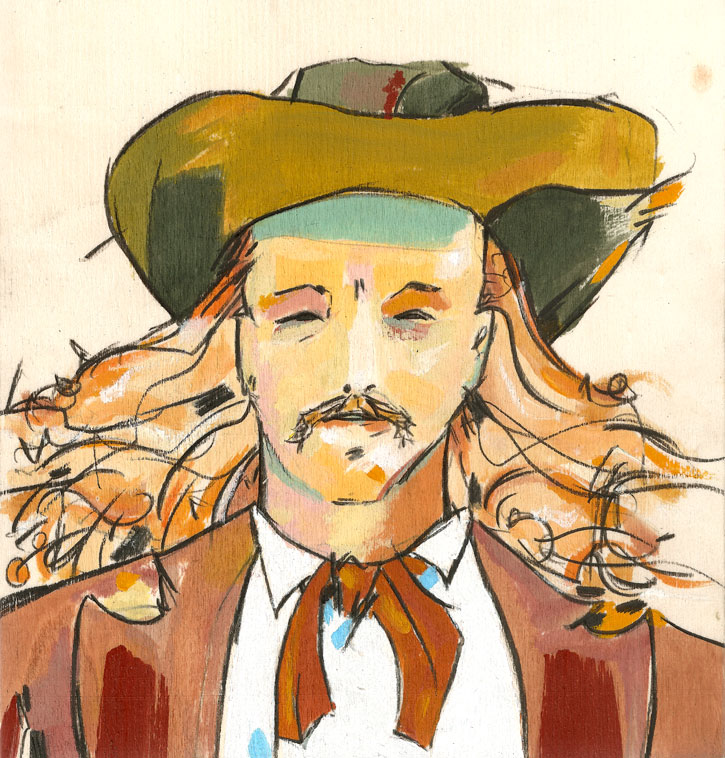

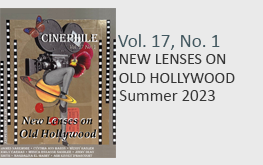
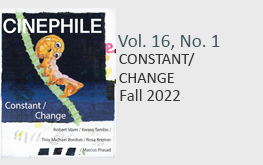
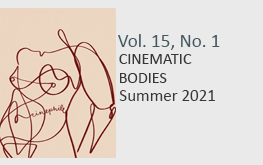
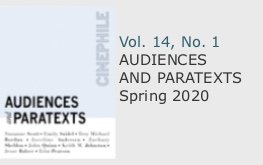
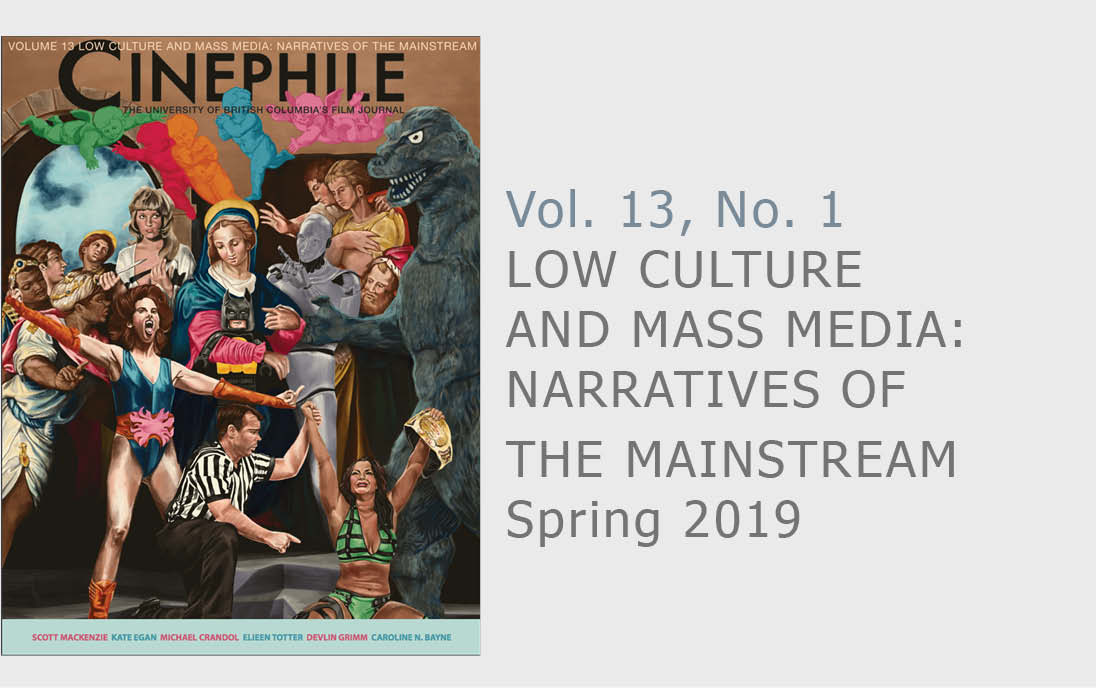
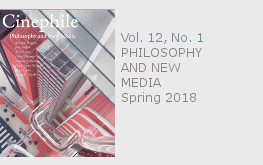
Maybe the reason for “(T)he latest’realistic’ depiction(s) of capitalism’s indifference to human suffering” is intuitive and instinctive. Perhaps there must be dimunition of empathy because of the slippery slope of relative “suffering”. Anyway, instead of being authentic human beings we are only social and cultural constructs, “Matrix” like beings or “Body Snatched” pod-like creatures that are “constructed,” robot-like, out of film culture genres. Maybe we all should sue the film studios, Time Warner, HBO CBS, NBC, ABC etc., in a class action suit and demand reparations for our HUMANITY SLAVERY due to film image propaganda! Regardless of whatever is depicted on the screen, there is always some trauma worse in reality than what will ever or can ever be virtualized in film, (truth is stranger than fiction) even if in a documentary. All documentaries are closer to mockumentaries. In other words, every film depicts CONSTRUCTS, images, representations instead of human beings with anything close to authentic human vulnerability. To show true human vulnerability, (different fom the sexual and power inequality that is competitive, comparative and/or titillating, etc.,)would be EDUCATIONAL and therefore the opposite of commercial and therefore unprofitable and even revolutionary and destabilizing to capitalism, (especially due to the potential for subliminal seed planing, ie promoting of critical thinking). Instead all movies (except in rare instances, like in Matrix, Sci-fi type films and in films like Michael Haneke directs) utilize critical thinking’s opposite: entertainment through distraction, and reinforced anesthetization. Most of what is filmed is DRAMA in the image of TRAUMA (perhaps because there are such obstacles , ie gate-keepers, money barriers, access is barred to those with poverty experience because we are mostly demonized, criminalized, marginalized as far as representation in academia, etc.) and so most of us reletavise even real trauma or deny its existence as such. Another reason that we may all be, or mostly are de-sensitized to human suffering is that if we try to help someone, as in the case of certain “good samaritans” we could be walking into a trap, a set up. It could be someone lies on the street pretending to be hurt, injured, and an accomplice lies in wait at some distance, ready to attack, mug you when you are distracted by assisting the faker. Sometimes, you can get sued or accused of causing the persons injury, etc., if there is, in fact, an emergency. One way to counteract this numbing, dumbing down is through humor, though few comics today avoid geting their audiences to think. Thakfully there is Bill Maher,and me, too: http://www.youtube.com/watch?v=UcyvM6Ap4Xc
http://www.youtube.com/barbaratodish
http://www.the7thfire.com/Todish/Life_Coaching_and_its_Implications_for_Communication.html
http://www.powerplayradiorantz.com
movie ratings really depend on how cool the movie is, i usually rate movies depending on the story line ~;:
very good submit, i actually love this website, keep on it